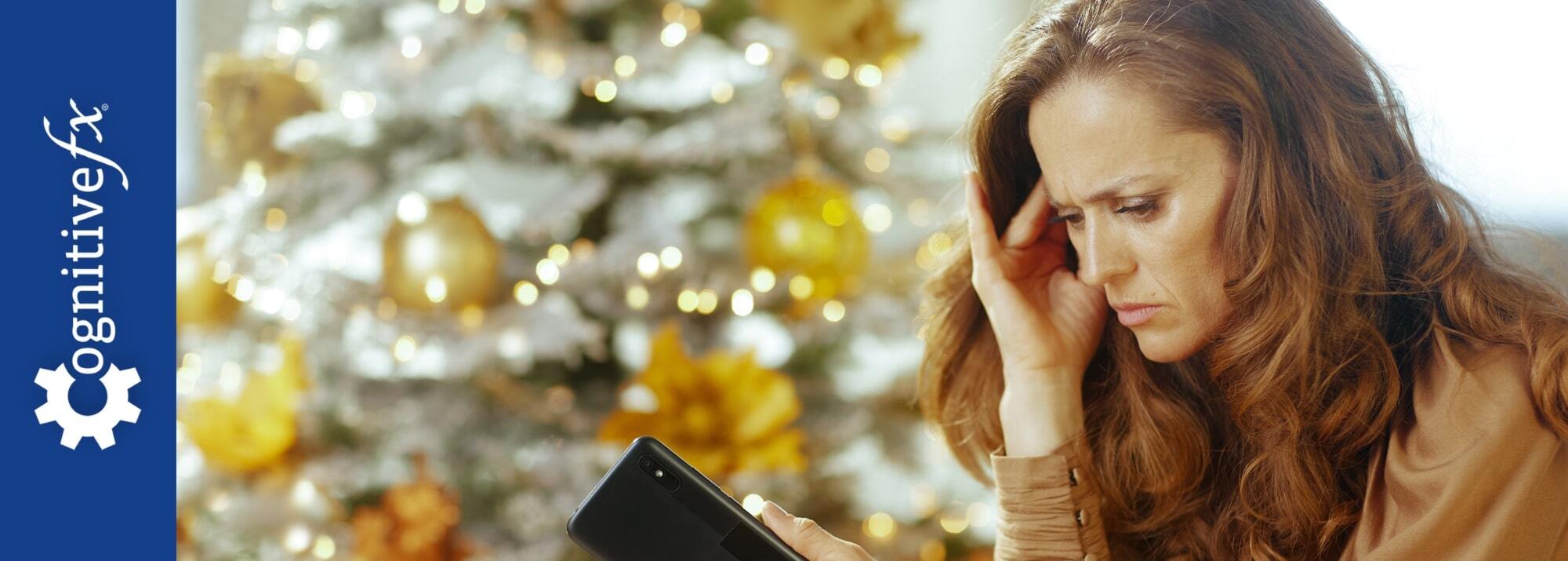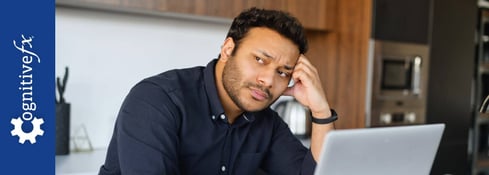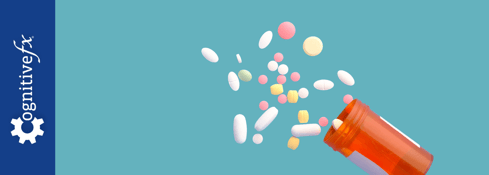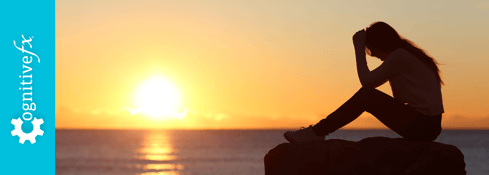Many people have had experiences where dark winter days or cold weather have affected their moods. But for about 5% of adults in the U.S., getting through the winter is more than just unpleasant—it’s a serious mental health challenge known as seasonal affective disorder (SAD).
Some SAD symptoms overlap with major depressive disorder (MDD)—low mood, fatigue, loss of interest—but others are unique, like craving carbohydrates and sleeping too much. It can feel like your body is shutting down and preparing to hibernate.
In this article, you’ll learn what causes SAD, common symptoms and treatments, and how transcranial magnetic stimulation (TMS) may help relieve symptoms, especially if you’ve tried other options or prefer to avoid medication.
Below, we cover:
What Is Seasonal Affective Disorder (SAD)?
Seasonal affective disorder (SAD) is a type of depression that occurs during specific seasons of the year. First described in the early 1980s, it’s officially recognized as “depression with a seasonal pattern.”
For most people, symptoms begin and end at roughly the same time each year, dissipating once the season changes.
Fall-Onset vs. Spring-Onset Seasonal Affective Disorder
There are two main types of SAD:
-
Fall-Onset SAD (Winter Depression): This is the most common type. Symptoms start in the fall and continue through winter, then fade in spring and summer. This isn’t the same as feeling stressed about the holidays or winter routines—it’s a clinical mood pattern linked to seasonal changes in light.
-
Spring-Onset SAD (Summer Depression): A rarer form in which symptoms appear in spring or summer and resolve in fall or winter. Sometimes called “reverse SAD,” it tends to feature agitation and insomnia rather than sluggishness.
Common Symptoms of Seasonal Affective Disorder
Symptoms of SAD vary, but most people experience several of the following:
- Persistent sadness or low mood
- Feelings of hopelessness or pessimism
- Irritability or frustration
- Anxiety or restlessness
- Loss of interest in hobbies and activities
- Fatigue or low energy levels
- Difficulty concentrating or making decisions
- Changes in sleep or appetite
- Weight changes
- Physical aches or headaches
- Digestive problems
- Decreased sex drive
- Thoughts of death or suicide
Additional Symptoms in Fall-Onset SAD
- Oversleeping (hypersomnia)
- Daytime drowsiness
- Increased appetite or carbohydrate cravings (often leading to weight gain)
- Social withdrawal (“hibernation mode”)
- Slowed movement and thinking
Additional Symptoms in Spring-Onset SAD
- Insomnia or trouble sleeping
- Decreased appetite and weight loss
- Agitation or restlessness
- Irritability or aggression
Risk Factors for SAD
Certain factors make you more likely to experience SAD:
- Family History: SAD and other mood disorders can run in families.
- Gender and Age: Women and younger adults are more commonly affected.
- Pre-Existing Mental Health Conditions: People with depression or bipolar disorder may experience seasonal worsening.
- Location: SAD is more common farther from the equator, where daylight hours are shorter in winter.
- Low Vitamin D Levels: Reduced sunlight means less vitamin D, which can lower serotonin activity in the brain.
What Causes SAD?
The leading theory links SAD—especially fall-onset SAD—to reduced exposure to sunlight during shorter days. This affects several brain systems:
- Disrupted Circadian Rhythm: Your internal clock relies on sunlight to regulate sleep, mood, and appetite. Less daylight can disrupt this rhythm.
- Increased Melatonin Production: Darkness triggers melatonin, the sleep hormone. Excess melatonin can cause fatigue and sluggishness.
- Reduced Serotonin Levels: Sunlight boosts serotonin, a key mood-regulating neurotransmitter. Low levels are associated with depression.
How Is SAD Diagnosed?
If you notice seasonal mood changes lasting at least two years in a row, talk to a healthcare provider.
Diagnosis usually involves:
- Reviewing your mood, sleep, and energy patterns across seasons.
- Confirming that symptoms occur during specific months and lift at other times.
- Ruling out other medical or psychiatric conditions through a physical exam or lab work.
Common Treatments for Seasonal Affective Disorder
Bright Light Therapy (BLT)
Bright light therapy (BLT) is considered the first-line treatment for SAD. It involves sitting near a special light box that mimics natural daylight for 30–60 minutes each morning. Multiple studies have demonstrated BLT to be effective and well-tolerated by patients. In one study, about two-thirds of patients responded within a few weeks.
Potential side effects include mild headache or eye strain, which tend to dissipate quickly. Patients with glaucoma, cataracts, or light sensitivity should seek medical guidance from an ophthalmologist.
You can purchase a light box without a prescription, but these devices are not currently regulated by the Food and Drug Administration (FDA) for SAD treatment.
Talk to your doctor to ensure you buy the right light box, and always follow the manufacturer's guidelines. Light boxes should be specifically designed for light therapy, emit minimal UV light, and be rated for at least 10,000 lux.
Cognitive Behavioral Therapy (CBT-SAD)
A version of cognitive behavioral therapy designed for SAD (CBT-SAD) helps patients identify negative, season-related thoughts—such as thoughts about the darkness of winter or lack of sunlight—and evaluate how accurate or helpful those thoughts really are. It also encourages behavioral activation, such as engaging in outdoor activities to increase light exposure.
Some studies show that CBT-SAD’s effectiveness is comparable to bright light therapy, with benefits lasting longer than light therapy alone. For the best results, many patients combine the two.
Antidepressant Medication
Antidepressant medications—used alone or alongside psychotherapy or bright light therapy—can also be effective for treating SAD.
Because SAD is associated with altered levels of serotonin, the most common types of antidepressants used are selective serotonin reuptake inhibitors (SSRIs) or norepinephrine and dopamine reuptake inhibitors (NDRIs).
At the moment, the only NDRI approved by the FDA to treat SAD is bupropion (Wellbutrin). This medication is often used to prevent the development of symptoms, and patients start taking it a few months before symptoms typically appear.
Medications can take 6–8 weeks to work and may be less convenient for seasonal use. They also commonly have unpleasant side effects, which lead some patients to prioritize or prefer other types of treatments.
Vitamin D Supplementation
Vitamin D supplements may help improve symptoms in some SAD patients. However, studies testing its effectiveness have found mixed results—some suggesting it helps, others finding no benefit.
Before taking any dietary supplements, consult your health care provider, especially if you’re on other medications, as vitamin D can interact with certain medications.
TMS Therapy as an Alternative Treatment for SAD
When light therapy and medications fall short—or when you’d rather avoid medication—transcranial magnetic stimulation (TMS) offers another option.
How TMS Works
TMS is a non-invasive treatment that uses magnetic pulses to stimulate the dorsolateral prefrontal cortex (DLPFC)—an area of the brain that handles mood regulation and decision-making.
By essentially “rebooting” underactive circuits, TMS helps restore normal activity patterns and reduce symptoms.
Research on TMS and SAD
While research is limited, preliminary evidence suggests rTMS may be just as effective for SAD patients as it is for depression patients, where about 50% of patients respond and about 30% achieve remission.
Studies also show that TMS can reduce SAD-specific symptoms such as hypersomnia, increased appetite, and weight gain by helping re-regulate the brain’s internal clock—essentially helping the body emerge from “hibernation mode.”
Unlike medication, which can take 6 to 8 weeks to begin working, TMS can be administered proactively before symptoms begin each winter, helping some patients prevent severe mood decline altogether.
Accelerated fMRI TMS Treatment at Cognitive FX
At Cognitive FX, we offer an advanced form of TMS called accelerated fMRI-guided TMS. It’s similar to Stanford Accelerated Intelligent Neuromodulation Therapy (the SAINT™ protocol)—which produces some of the highest response and remission rates of any depression treatment.
This form of TMS improves upon conventional protocols in important ways:
1. Precision Targeting
Conventional TMS protocols use a manual measurement technique to identify the treatment target site, but studies have shown that missing the treatment target area by even a few millimeters can significantly reduce TMS treatment effectiveness.
At Cognitive FX, we use advanced fMRI brain imaging to identify the exact target site for each patient, and neuronavigation to ensure the magnetic pulses are delivered to that exact spot for every treatment session.
2. Condensed Treatment Schedule
Conventional TMS protocols are delivered with daily sessions over 4 to 6 weeks, making it difficult to complete amidst work and life commitments. In contrast, our treatment is completed in just 5 days.
3. Improved Remission and Response Rates

A comparison of remission rates for rTMS/iTBS, ECT, and SAINT-iTBS.
There are no studies specifically evaluating SAINT TMS for SAD, but in a double-blind randomized clinical trial, about 86% of patients with treatment-resistant depression responded to SAINT, and roughly 79% reached remission. All participants had already failed at least two other depression treatments. One month after treatment, 60% remained in remission.
Our version applies the same core principles—iTBS, fMRI-guided targeting, and a condensed 5-day treatment schedule—but uses our in-house fMRI analysis rather than Magnus Medical’s proprietary software.
Both protocols are safe, precise, and highly effective accelerated TMS approaches, but our fMRI-based targeting keeps costs significantly lower while maintaining precision and outcomes.
More Information and Patient Considerations
- Accelerated TMS protocols, including the one we offer at Cognitive FX, are not yet covered by insurance.
- We integrate cognitive behavioral therapy (CBT) alongside TMS, which research shows can improve response and remission rates and extend results.
- Our program is ideal for adults 18–65 with treatment-resistant or seasonal depression; we do not treat patients with a seizure history or those in active crisis care.
Click here to learn more about receiving accelerated fMRI TMS therapy at Cognitive FX or take our quiz to see if you’re a good fit for treatment.
Coping with SAD at Home
While professional treatment is important, lifestyle changes can make a meaningful difference.
- Get outside during daylight. Even short walks help boost mood. Morning sunlight exposure (without sunglasses) is particularly beneficial.
- Brighten your environment. Open curtains and sit near windows.
- Eat a balanced diet. Choose fruits, vegetables, and whole grains over sugary “comfort” foods.
- Exercise regularly. Movement improves energy, mood, and sleep.
- Keep a symptom diary. Track patterns to anticipate seasonal shifts.
- Plan ahead. Prepare meals, adjust your schedule, and plan relaxing activities before your low-mood season begins.
Help Is Available
Seasonal affective disorder can make winter months feel endless, but effective treatments exist. Light therapy, CBT, medication, and vitamin D can all help—and for those who don’t respond or prefer a non-medication approach, TMS is a precise, proactive option.
At Cognitive FX, we combine advanced brain imaging with accelerated TMS and supportive therapy to help patients regain energy, motivation, and emotional balance—no matter the season.
Click here to learn more about receiving accelerated fMRI TMS therapy at Cognitive FX or take our quiz to see if you’re a good fit for treatment.
Cited Research










